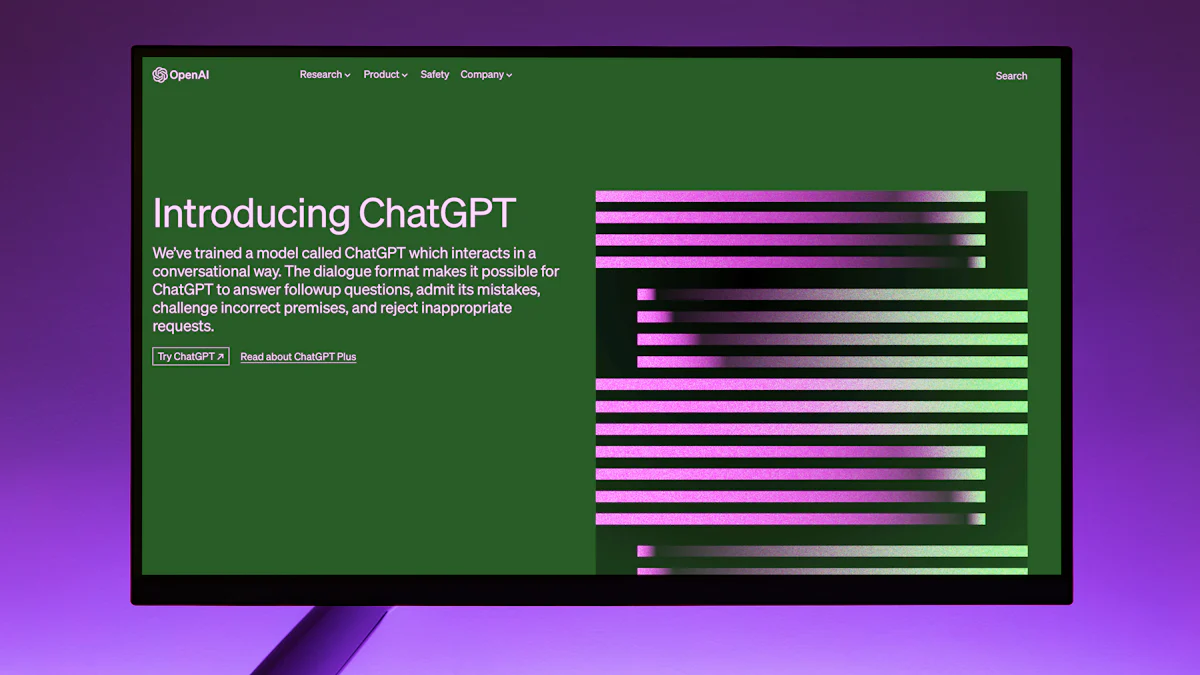Understanding GPT-4o's PDF Size Limit

GPT-4o represents a significant advancement in AI-driven text analysis. Understanding the GPT-4o PDF size limit is crucial for optimizing its performance. Users need to grasp these limits to ensure efficient and accurate processing of PDF documents. This knowledge is particularly relevant for applications requiring large-scale document analysis, such as legal research, academic studies, and business reporting.
Overview of GPT-4o
What is GPT-4o?
GPT-4o represents a significant advancement in AI-driven text analysis. This model can handle complex tasks with high accuracy and efficiency. Users can leverage GPT-4o for various applications, making it a versatile tool in the AI landscape.
Key features and capabilities
GPT-4o boasts several key features:
High token limit: The context window has been expanded to 128,000 tokens.
PDF processing: Users can upload documents for targeted questioning.
Text extraction: The model can extract text and data from PDFs, including tables and forms.
Large file handling: GPT-4o can manage PDF files up to 512MB in size.
These features enable GPT-4o to perform tasks that require extensive text analysis and data extraction.
Common use cases
GPT-4o finds application in various fields:
Legal research: Analyzing large volumes of legal documents.
Academic studies: Summarizing and extracting information from research papers.
Business reporting: Generating insights from financial reports and business documents.
These use cases highlight the model's versatility and effectiveness in handling diverse text-based tasks.
How GPT-4o processes PDFs
GPT-4o employs advanced techniques to process PDF documents efficiently. Understanding these technical aspects helps users optimize the model's performance.
Technical aspects of PDF processing
GPT-4o uses sophisticated algorithms to read and interpret PDF content. The model can extract text, tables, and forms from documents. Users benefit from this capability when dealing with structured data within PDFs.
Importance of PDF size in processing
The size of a PDF significantly impacts GPT-4o's processing capabilities. Larger files require more memory and computational power. Users must adhere to the maximum size constraints to ensure smooth and accurate processing. The model's ability to handle up to 512MB files and 2 million tokens per document provides ample capacity for most applications.
GPT-4o PDF Size Limit

Defining the GPT-4o PDF Size Limit
Maximum size constraints
The GPT-4o PDF size limit stands at 512MB per file. This limit ensures that users can upload substantial documents without encountering issues. The model also supports up to 2 million tokens per document. These constraints provide ample room for most applications, including legal research and business reporting.
Factors influencing size limits
Several factors influence the GPT-4o PDF size limit. The complexity of the document plays a significant role. Documents with extensive graphics or embedded media consume more memory. The structure of the text, such as the presence of tables and forms, also impacts the size limit. Users must consider these elements when preparing PDFs for processing.
Technical reasons for size limits
Memory and computational constraints
Memory constraints significantly impact the GPT-4o PDF size limit. Larger files require more RAM to process efficiently. The model needs to load the entire document into memory to perform text extraction and analysis. This requirement places a cap on the maximum file size. Computational power also plays a role. Processing large PDFs demands substantial CPU and GPU resources. These constraints ensure that the model operates within optimal performance parameters.
Impact on performance and accuracy
The size of a PDF directly affects the performance and accuracy of GPT-4o. Larger files take longer to process, leading to potential delays. The model might experience difficulties in maintaining high accuracy levels with oversized documents. Users may encounter errors or incomplete data extraction. Adhering to the GPT-4o PDF size limit helps mitigate these issues. Ensuring that PDFs remain within the specified limits guarantees smoother and more accurate processing.
Challenges and Limitations
Issues with large PDFs
Processing delays
Large PDFs often cause significant processing delays. The GPT-4o PDF size limit of 512MB requires substantial memory and computational power. Loading and analyzing such large files can slow down the system. Users may experience extended wait times when processing these documents. The complexity of the document's layout also affects processing speed. Complex layouts with numerous tables, forms, and embedded media require more time to interpret.
Potential errors and failures
Handling large PDFs increases the risk of errors and failures. The GPT-4o model might struggle with maintaining accuracy when processing oversized files. Users may encounter incomplete data extraction or misinterpretation of text. Documents with intricate formatting and graphics pose additional challenges. These elements can lead to processing errors, reducing the overall reliability of the output. Adhering to the GPT-4o PDF size limit helps mitigate these risks.
User experiences and feedback
Common problems reported
Users frequently report issues related to large PDFs. Common problems include processing delays and incomplete data extraction. Many users find that the model struggles with complex layouts and formatting. These challenges often result in inaccurate outputs. Users also note difficulties in handling documents with extensive graphics and embedded media. These elements consume more memory and computational resources, leading to potential failures.
Case studies and examples
Several case studies highlight the challenges of processing large PDFs with GPT-4o. For instance, a legal firm attempted to analyze a 500MB document containing numerous tables and forms. The processing took several hours, and the output contained errors in data extraction. Another example involves an academic researcher working with a 450MB research paper. The document's complex layout caused incomplete text extraction, impacting the researcher's analysis. These examples underscore the importance of adhering to the GPT-4o PDF size limit for optimal performance.
Practical Solutions and Strategies

Optimizing PDF size for GPT-4o
Techniques for reducing PDF size
Reducing the size of a PDF can enhance processing efficiency with GPT-4o. Several techniques can help achieve this goal:
Compress images: High-resolution images increase file size. Use image compression tools to reduce resolution without losing quality.
Remove unnecessary elements: Delete redundant pages, annotations, and embedded media. These elements consume extra space.
Optimize fonts: Embed only necessary fonts. Avoid using multiple font types and sizes.
Flatten layers: PDFs with multiple layers take up more space. Flatten layers to create a single-layer document.
Use PDF optimization tools: Tools like Adobe Acrobat and online services can optimize PDFs by compressing images and removing unnecessary elements.
Tools and software recommendations
Several tools and software can assist in reducing PDF size:
Adobe Acrobat Pro: Offers comprehensive features for PDF compression and optimization.
Smallpdf: An online service that provides easy-to-use PDF compression tools.
PDFsam Basic: A free tool that allows users to split and merge PDFs, reducing overall size.
PDF-XChange Editor: Provides advanced options for optimizing and compressing PDF files.
Nitro PDF Pro: Another robust tool for PDF editing and compression.
Best practices for users
Preparing PDFs for processing
Proper preparation of PDFs ensures smooth processing with GPT-4o. Follow these best practices:
Check file size: Ensure the PDF does not exceed 512MB. Smaller files process more efficiently.
Simplify layout: Use a straightforward layout with minimal graphics and complex formatting.
Ensure text readability: Clear and legible text improves extraction accuracy.
Organize content: Structure the document logically. Use headings and subheadings for better readability.
Test before final processing: Run a test with a smaller version of the document to identify potential issues.
Ensuring compatibility and efficiency
Ensuring compatibility and efficiency involves several steps:
Use compatible formats: Save PDFs in a format supported by GPT-4o. Standard PDF/A format works well.
Avoid scanned images: Text-based PDFs perform better than image-based ones. Use OCR (Optical Character Recognition) to convert images to text.
Regular updates: Keep PDF software updated to benefit from the latest features and improvements.
Monitor performance: Track processing times and accuracy. Adjust file preparation methods based on performance feedback.
Seek support: Utilize customer support for troubleshooting and optimization tips.
By following these practical solutions and strategies, users can maximize the efficiency and accuracy of GPT-4o when processing PDF documents.
The blog explored the importance of understanding the GPT-4o PDF size limit. Adhering to the 512MB file size constraint ensures efficient and accurate processing. Users must adopt strategies to handle large or complex PDFs effectively. Techniques such as compressing images, removing unnecessary elements, and using optimization tools can significantly improve performance. Proper preparation and adherence to best practices guarantee smoother and more reliable results. Maximizing GPT-4o's effectiveness requires mindful consideration of these factors.
See Also
Discovering the Potential of ChatGPT: Conversing with PDFs for Liberated AI
Revolutionizing Sites using GPT-4 and Pinecone: Accessing AI Assistant Features
Revealing the Weaknesses and Dangers of ChatGPT Exploitation
Morally Harnessing ChatGPT for Corporate Automation: Conquering Obstacles
Comprehensive 2024 Manual: Educating ChatGPT with Personal Data

